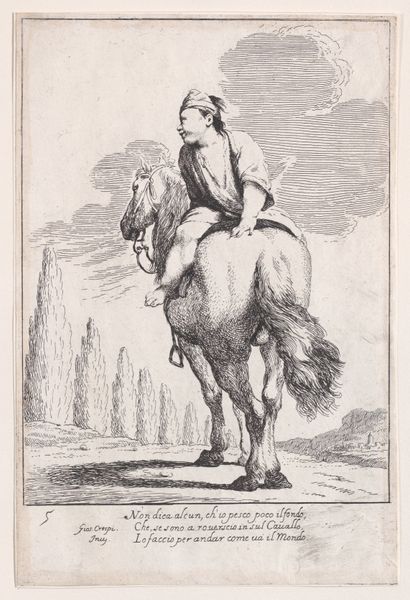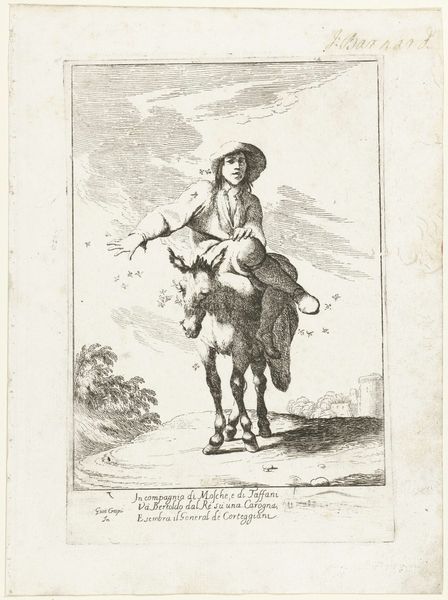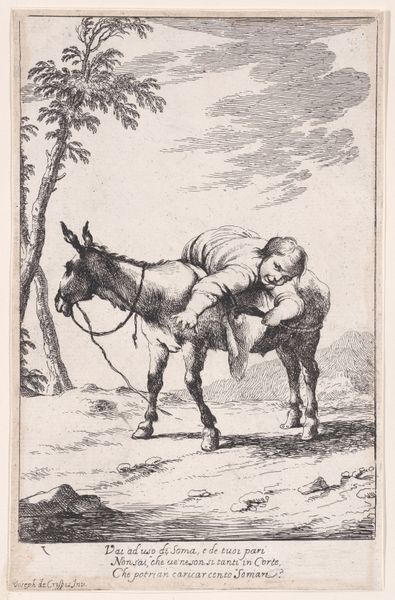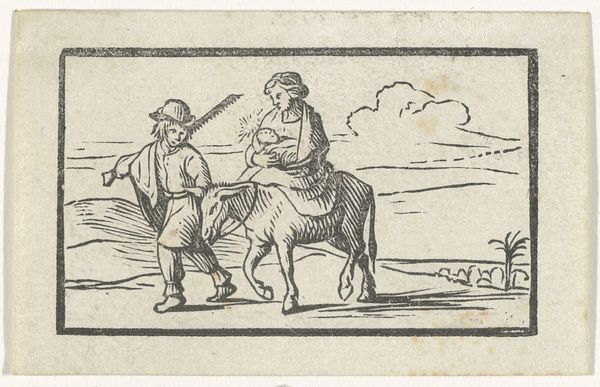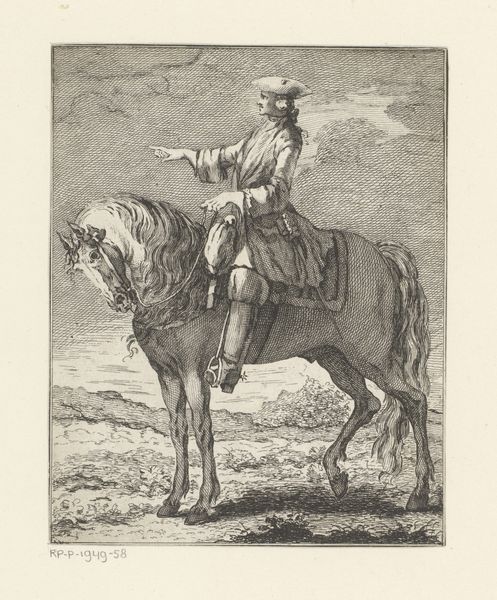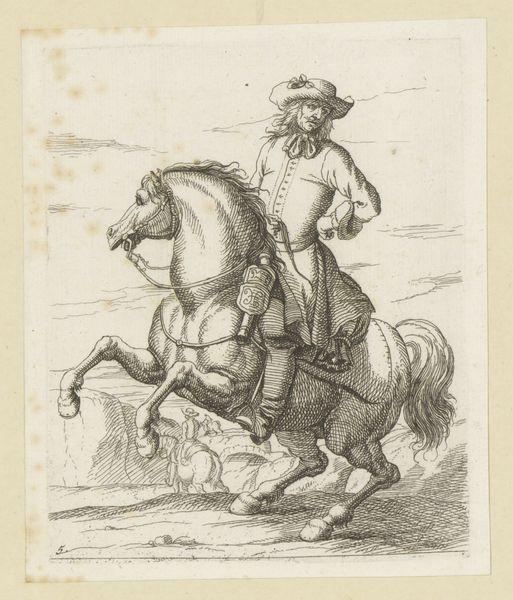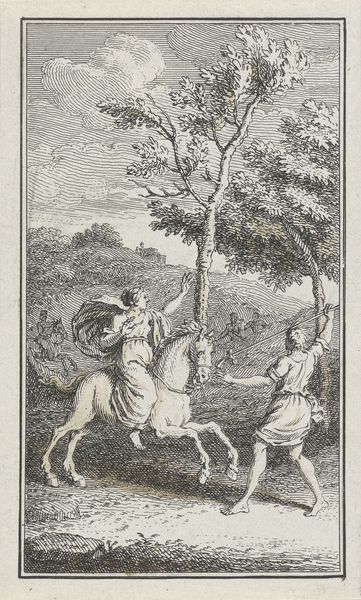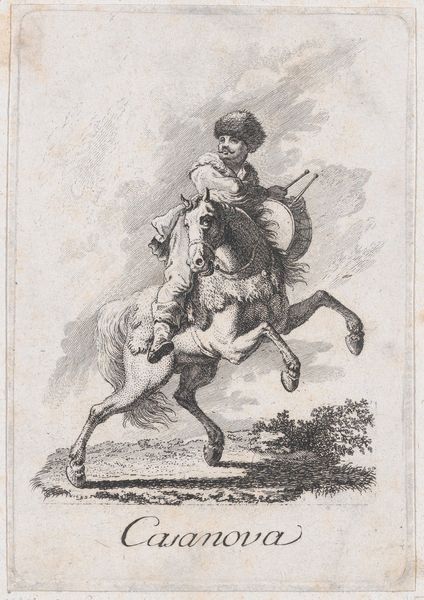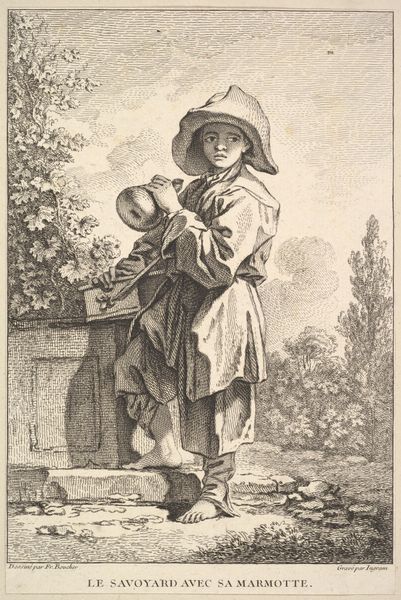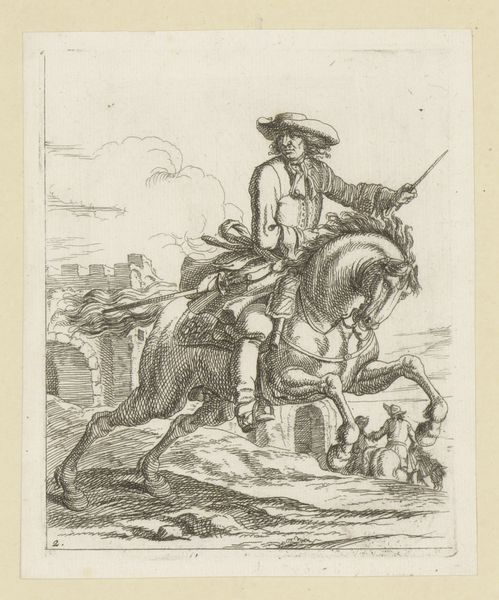
Plate 1: Bertoldo riding a donkey, from "Bertoldo, Bertoldino, and Cacasenno" 1705 - 1715
0:00
0:00
drawing, print, engraving
#
drawing
#
baroque
# print
#
figuration
#
genre-painting
#
engraving
Dimensions: Sheet (Trimmed): 9 × 6 in. (22.9 × 15.2 cm)
Copyright: Public Domain
Editor: Here we have Giuseppe Maria Crespi’s engraving from 1705-1715, “Plate 1: Bertoldo riding a donkey, from “Bertoldo, Bertoldino, and Cacasenno”. The figure seems…unbalanced, awkward even. It's a comical scene, but I'm not quite sure what's being communicated. How do you interpret this work? Curator: That awkwardness, that feeling of being off-kilter, is exactly where we can begin. This print is one in a series illustrating a popular comedic novella featuring Bertoldo, a boorish peasant elevated to court. But the humor isn't just for laughs. Think about what it means to depict someone who is out of place. Crespi is using Bertoldo's character to critique social mobility and the corruption within the aristocratic system. Is Bertoldo's journey ultimately about access or accountability? Editor: So, the humor is a vehicle for social commentary? That makes me think about the role of satire and caricature throughout history. But what's particularly telling about this specific image? Curator: Consider the donkey. It’s not a noble steed but a beast of burden. Bertoldo, a peasant, is riding it, not gracefully guiding it. In his crude attire, this image then exposes class tensions inherent in societies marked by strict hierarchies, resonating across centuries of social disparity. Who holds power, who is subjugated, and how is that imbalance maintained or challenged through such simple narratives? Editor: So, the donkey, Bertoldo's posture, it all speaks to the instability of upward mobility in a rigid social structure... Curator: Precisely. It prompts us to think about the stories we tell about class, power, and belonging and how artists use satire to disrupt dominant narratives. The beauty is that the personal stories always circle back to larger institutional concerns, and here we see a perfect marriage of the two. Editor: I see it now! Thank you. I hadn't considered the political implications within something so seemingly lighthearted. Curator: It’s a potent reminder that even the most amusing images can carry significant social and political weight. These are conversations art should always inspire!
Comments
No comments
Be the first to comment and join the conversation on the ultimate creative platform.
